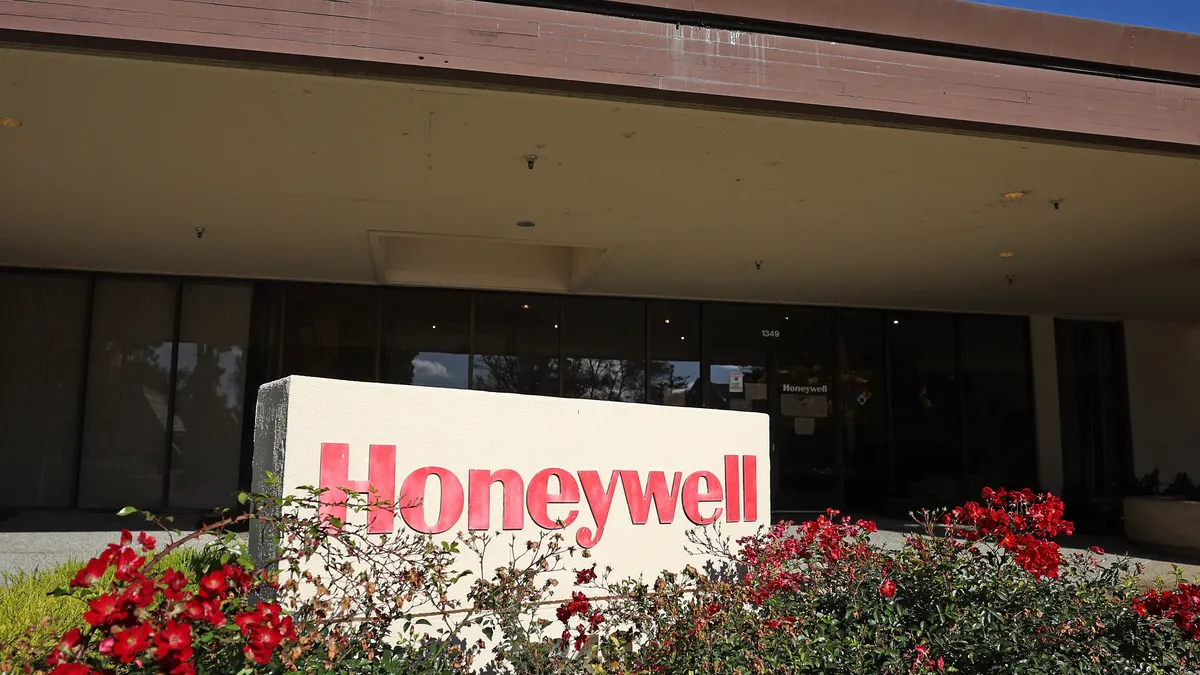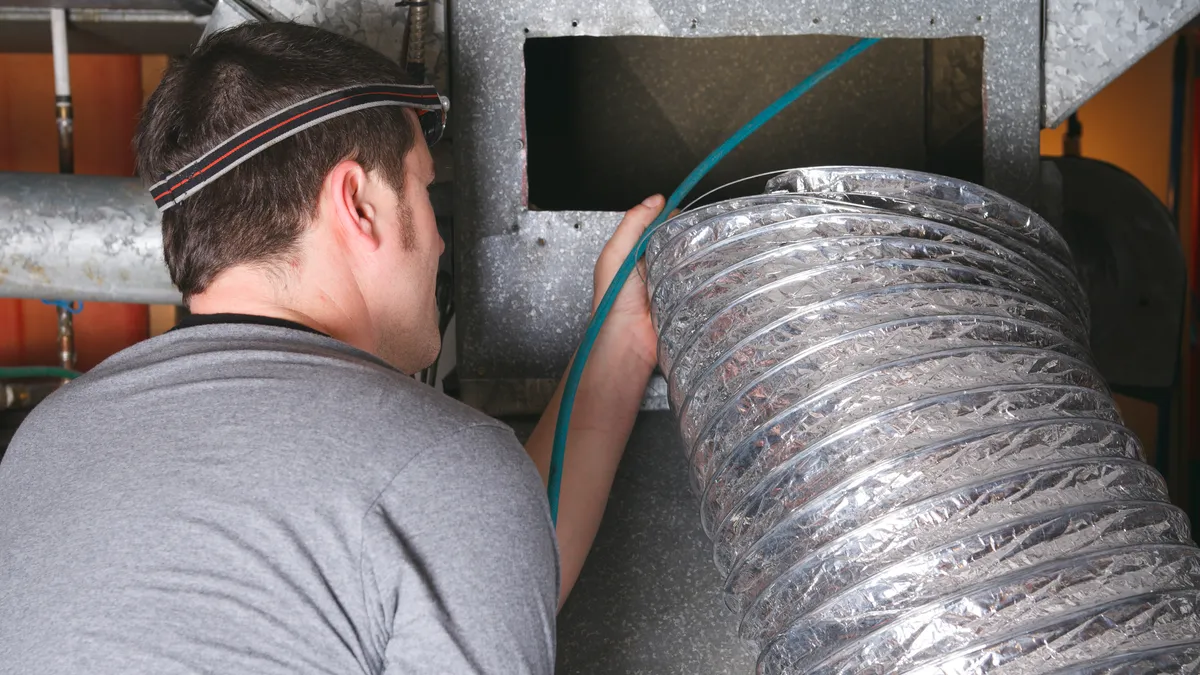Dive Brief:
- Honeywell’s building automation segment grew sales 3% organically year over year in the third quarter of 2024, with an 8% organic growth in building solutions offsetting modest year over year declines in building products, according to its earnings release Thursday.
- Building automation sales grew to about $1.75 billion in the third quarter. Double-digit organic sales growth in projects added to sequential improvements in building solutions and products, Honeywell said in an earnings presentation. The company reported double-digit year-over-year growth in building automation orders, including over 20% year-over-year growth in building solution orders.
- The company’s building automation segment grew 14% year over year in the third quarter, including the first full quarter of impact from Honeywell’s acquisition of Global Access Solutions from Carrier in June, CFO Greg Lewis said on an earnings call.
Dive Insight:
The $4.95 billion acquisition of Global Access Solutions, which includes the LenelS2, Onity and Supra brands of physical security and access control systems, is expected to accelerate Honeywell’s innovation in cloud-based services and strengthen its building automation business model with “high-value products that are critical for building,” the company said in early June when it announced that the deal had closed.
“Building automation orders continue to be a bright spot, led by 25% year-over-year growth in building solutions on continued strong demand in data centers, healthcare and energy,” Lewis said on the call. “Segment margin expanded 30 basis points to 25.9%, due to the impact of a full quarter from Access Solutions and commercial excellence, partially offset by cost inflation.”
As part of a push to improve its building automation segment, Honeywell announced last month it is integrating Cisco’s real-time occupancy and environmental data with its Forge Sustainability+ for Buildings product to provide insights into energy efficiency and building utilization. The integration will help building owners and operators monitor assets for conditions such as room temperature, lighting and ventilation in specific zones, individual buildings and entire campuses, Honeywell said at the time.
Global Access Solutions is one of four M&A transactions Honeywell was involved in this year as part of its portfolio simplification strategy. The other deals include its acquisition of Civitanavi and CAES Systems, and its purchase of Air Products’ liquefied natural gas process technology and equipment business. The company has also been working to offload non-core businesses like its Advanced Materials business and its personal protective equipment unit. Building automation and energy and sustainability solutions are expected to lead segments in margin expansion, with orders growth driving a 10% year-over-year improvement in Honeywell’s backlog to $34 billion, Lewis said.
Industrial automation sales dropped 5% year over year in the third quarter on an organic basis and were flat sequentially, led by lower volumes in warehouse and workflow solutions and safety and sensing technologies, per the release. Process solutions delivered 2% organic growth in the third quarter and grew sequentially due to continued strength in aftermarket services and compressor controls, offset by softness in thermal solutions and smart energy, Honeywell said.
In an effort to bolster the industrial automation segment, the company recently announced a partnership with Google Cloud that will accelerate ”customer transition from automation to autonomous operations,” Honeywell CEO Vimal Kapur said on the call.
“[We] are connecting more and more of our customer assets into our Forge platform for the last … two to three years. The obvious next question for us is what are we going to do with that data as we keep expanding our customer base through connectivity,” Kapur said. The company is exploring Google’s Vertex AI capability, which brings some unique features, that “will create new applications on top of that data,” he added.
Kapur noted that he expects the partnership to improve some of its edge devices, such as warehouse scanners and gas detection devices, by embedding AI at the chip level which will make “those products more capable.”
“We expect to launch first-half one of them in early 2025. So, this is not a long-term dream. This is [imminent],” Kapur said.













